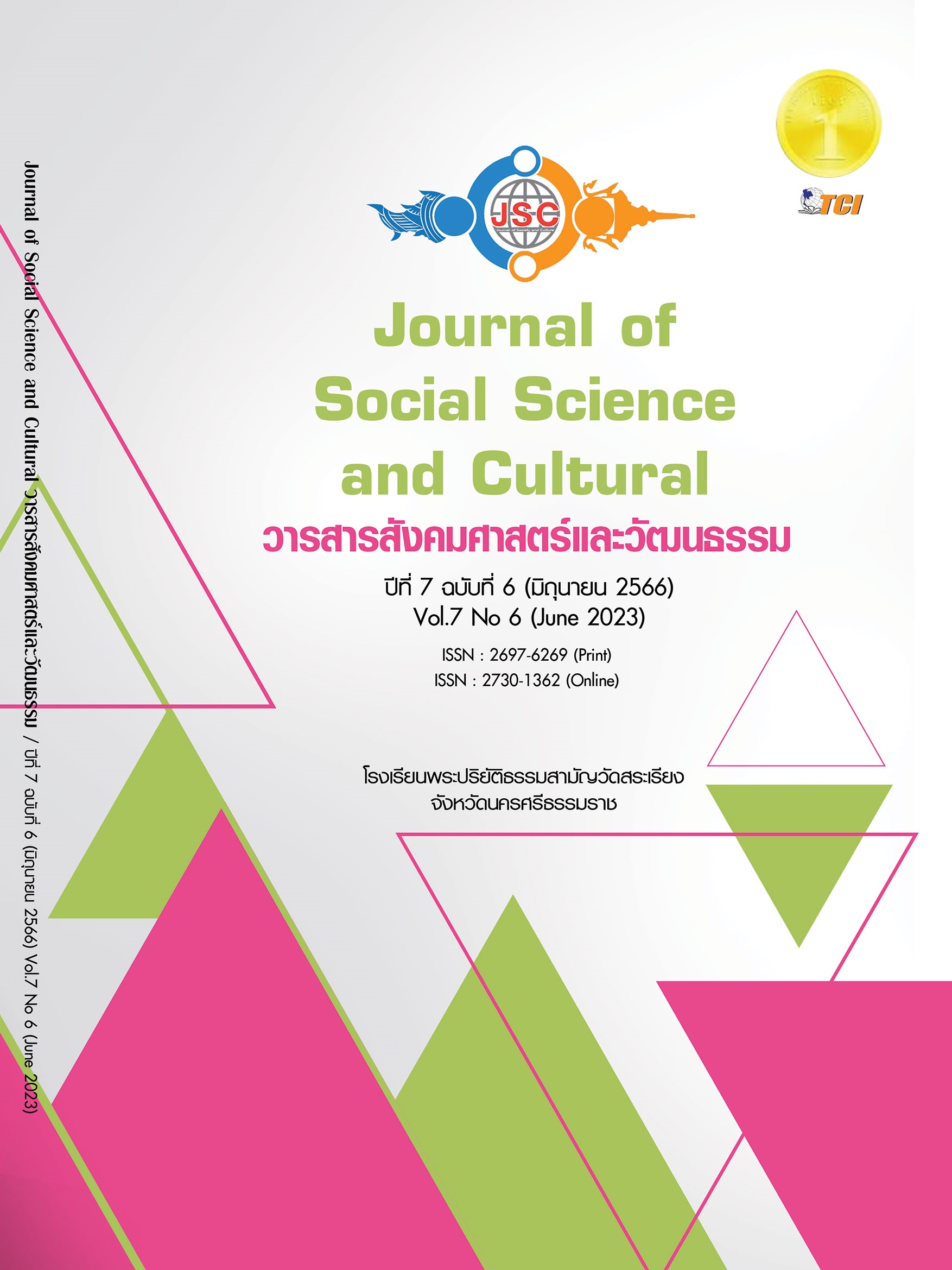DEVELOPMENT OF ECONOMIC ABSORPTION MECHANISM FOR LOCAL FABRIC PRODUCTS IN NAKHON SI THAMMARAT RAJABHAT UNIVERSITY
Main Article Content
Abstract
The objective of this research is to design policies, mechanisms to absorb the economy and develop economic absorption mechanisms, vernacular fabric products, with the University of Rajabhat Nakhon Si Thammarat as a market. The university has a higher demand than the production volume. Sample groups for implementing 5 groups of projects by specific selection methods. Students use common methods to createMechanisms for linking product / product requirements in various departments of the university With the product producer group/Local production By conducting research on the community stage in the form of workshops Found that the university is pushing the consumption of fabric products from the vernacular of Nakhon Si Thammarat by dividing into 2 categories, namely 1) official work type. It is a product that must be operated through the resolution of the Rajabhat University of Nakhon Si Thammarat Ati University has resolved to use the Metropolitan Fabric as a Kruei band, receiving a degree from Rajabhat University, Nakhon Si Thammarat. And set a policy for cooperation for personnel within the university to dress in Thai or native fabrics of Nakhon Si Thammarat Divided into 2 categories, namely 1) Official work type Is a product that must be implemented through the resolution of the Royal University of Nakhon Si Thammarat Ati University, resolved to use the Nakhon Phraek as a Khao Khao Phrae Division, received the degree of Rajabhat Nakhon Si Thammarat University. And establish a policy for cooperation for personnel within the university to dressThai fabric set or native fabric of Nakhon Si Thammarat Province Every friday of the week 2) General work type is a product that does not need to be processed through the resolution of the Royal University of Srivat Nakhon Ratchasat, such as Thai clothing bags, which the personnel and students in the university have used in the activities of the university. There are also areas for distribution through 2 distribution channels, namely distribution.Online through the website of the Property Management Unit and provide income and sell offline through the center. On-site distribution But in terms of production, there are still restrictions on production in sufficient quantities to market demand. And raw material problems that require external imports Which results in costs are high.
Article Details
References
กรมการพัฒนาชุมชน. (2559). คู่มือการดําเนินงาน ผู้ผลิต ผู้ประกอบการ OTOP รายใหม่ประจําปี 2558. กรุงเทพมหานคร: สํานักส่งเสริมภูมิปัญญาท้องถิ่นและวิสาหกิจชุมชน กรมการพัฒนาชุมชน.
คณะอนุกรรมการยุทธศาสตร์เศรษฐกิจฐานราก. (2559). คู่มือการส่งเสริมการพัฒนา “ระบบเศรษฐกิจฐานราก”. กรุงเทพมหานคร: สำนักสนับสนุนขบวนองค์กรชุมชน.
ธวัชชัย กฤติยาภิชาตกุล. (2547). ร้อยเรื่องเมืองพานิชย์. กรุงเทพมหานคร: สันติภาพ พริ้นท์.
หทัยชนก คะตะสมบูรณ์. (2563). การพัฒนาศักยภาพของชุมชนเพื่อสร้างเศรษฐกิจฐานรากอย่างยั่งยืน:กรณีศึกษาตำบลเนินศาลา อำเภอโกรกพระ จังหวัดนครสวรรค์. วารสารสันติศึกษาปริทรรศน์ มจร, 8(2), 459-473.
อัญชรา พุทธิกาญจนกุล และคณะ. (2558). แนวทางการพัฒนาการ ดำเนินงานสินค้าหนึ่งตำบลหนึ่งผลิตภัณฑ์ (OTOP) เพื่อรองรับประชาคมเศรษฐกิจอาเซียน (AEC) ของผู้ประกอบการในเขตอำเภอหางดง จังหวัดเชียงใหม่. วารสารวิชาการคณะบริหารธุรกิจ มหาวิทยาลัยเทคโนโลยีราชมงคลธัญบุรี, 2(1), 75-85.
Castaldo, S. et al. (2009). The Missing Link Between Corporate Social Responsibilityand ConsumerTrust,The CaseofFairTradeProducts. Journal of Business Ethics, 84(1), 1-15.
Igusa, K. and Kunio, K. (2012). OneVillage OneProduct - Rural Development Strategy In Asia: The Case Of Otop In Thailand. Journal of OVOP Policy, 1(33), 369-385.
Kotler, P. & Keller, L. K. . (2012). Marketing Management, (14thed.). London: Pearson Educations Limited.
Muangyai, A. (2016). Development Approach to Enhancing the Potential of Community and Local in the Twenty-First Century. Eau Heritage Journal Social Science and Humanity, 6(3), 12-26.
Noknoi, C. et al. (2012). Key success factors for obtaining a One Tambon One Product food five-star rating in Phatthalung and Songkhla province. European Journal of Economics; Finance and Administrative Sciences, 48 (2012), 96-103.
Panyanuwat, A., et al. (2014). Assessing the cost of administering the designated areas for sustainable. Bangkok: Designated Areas for Sustainable Tourism Administration (Public Organization).
Promsaka, N. et al. (2009). Management Strategy for Administration of Textile Industries in Developing Country: Case Study Thailand. Journal of Business Case Studies, 5(3), 37-44.


